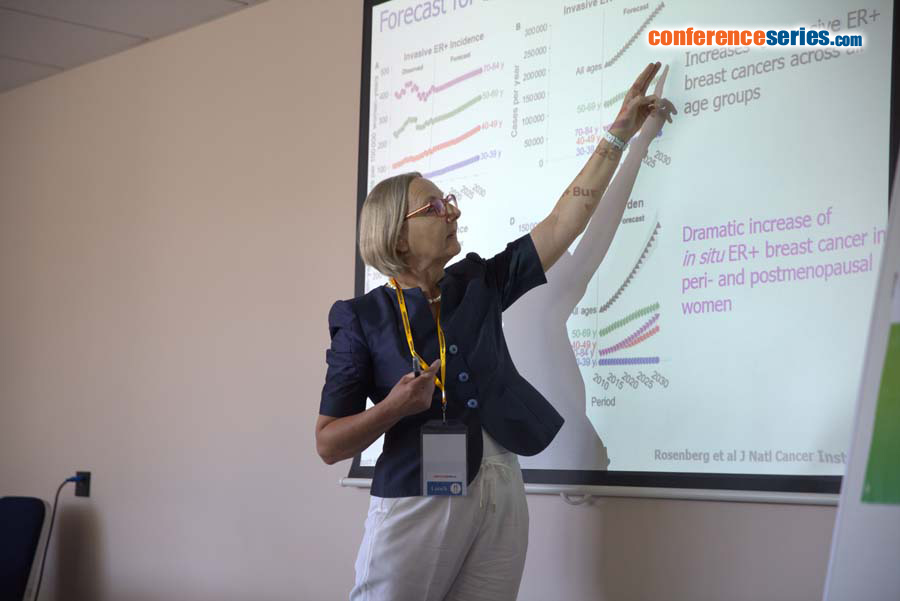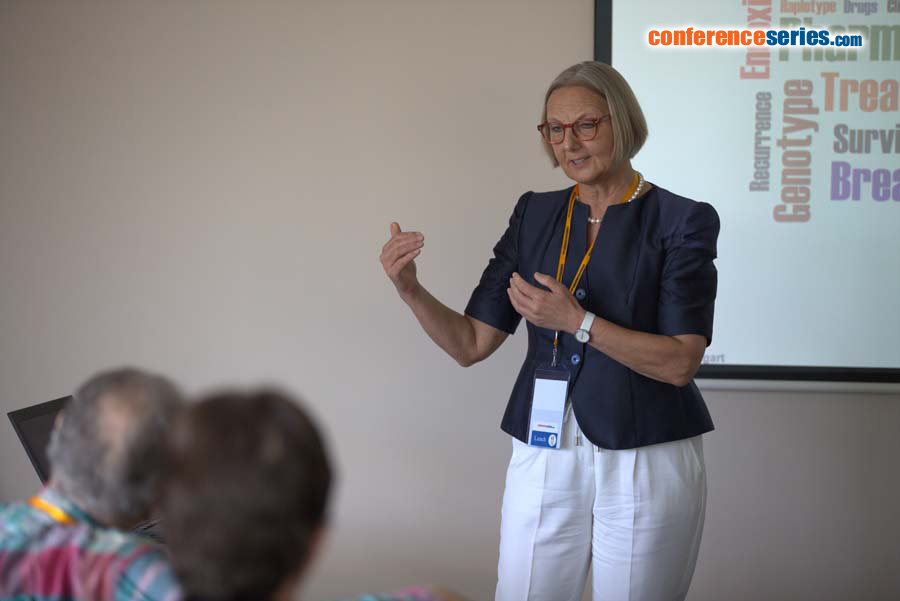
Hiltrud Brauch
Dr. Margarete Fischer Bosch-Institute of Clinical Pharmacology, Germany
Title: Tamoxifen pharmacogenomics of breast cancer: the controversy and way forward
Biography
Biography: Hiltrud Brauch
Abstract
Breast cancer is a global health burden with 1.7 million newly diagnosed patients and more than half a million patients dying from the disease each year. The large majority (75%) of breast cancers express the estrogen receptor (ER) making them amenable to targeted endocrine therapy. Standard of care is the blockade of estrogen signaling via long-term estrogen deprivation. Two proven treatment options are available: tamoxifen, a selective ER modulator which blocks 17ß-estradiol binding to ER to stop tumor growth, and aromatase inhibitors (AI), which block the aromatase enzyme that prevents the conversion of androgens to estrogens. Despite the well-established effectiveness of endocrine treatments every other patient displays de novo or acquired resistance which ultimately leads to disease progression and death. Based on its well-known metabolism and drug action, tamoxifen has been in the spotlight of pharmacogenomics investigations within the past decade. The goal is to identify biomarkers that can predict tamoxifen outcome and facilitate personalized treatment schemes in order to avoid drug failure. Tamoxifen failure has been in part attributed to a lack of bio-activation towards its active metabolite, endoxifen. Pharmacological and pharmacogenetics evidence strongly support the view that in vivo endoxifen formation is mainly mediated from the primary metabolite N-desmethyl-tamoxifen by the polymorphic cytochrome P450 (CYP) 2D6 enzyme. Distinct genetically determined functional CYP2D6 variants are present in the general population and inter-individual differences in enzyme activities can be grouped into the four CYP2D6 phenotypes ultra-rapid (UM), extensive (EM), intermediate (IM) and poor (PM) metabolizers. We and others provided strong evidence that tamoxifen treated EM breast cancer patients have high levels of endoxifen and that they are likely to benefit from the treatment. In contrast, PM patients have low endoxifen levels and a significant risk to relapse. Thus, CYP2D6 polymorphism and plasma endoxifen levels have a great potential as suitable tamoxifen outcome predictors. However, due to controversies from negative studies, the translation into the clinic has been hampered. In my talk, I will discuss the current status of the debate and emphasize the need for uniform study design, technology and statistical procedures in the conduct of pharmacogenomics analyses in order to avoid shortcomings and delay in clinical implementation. Moreover, I will present a way forward towards the clarification of the CYP2D6 tamoxifen pharmacogenomic issue via a novel strategy for the optimization of endoxifen plasma levels in CYP2D6 compromised breast cancer patients currently investigated in our ongoing phase II clinical trial.




